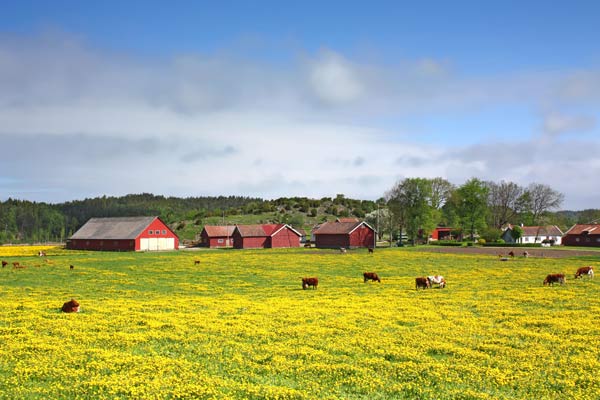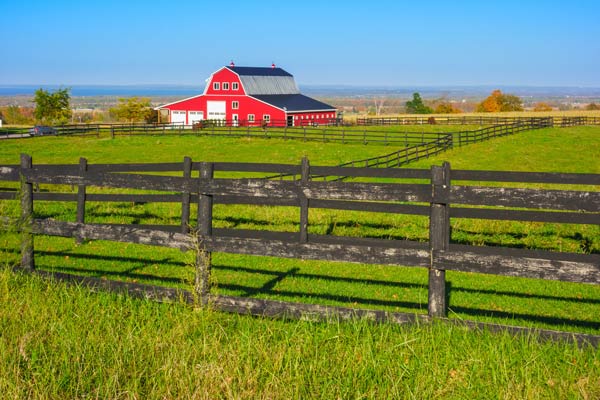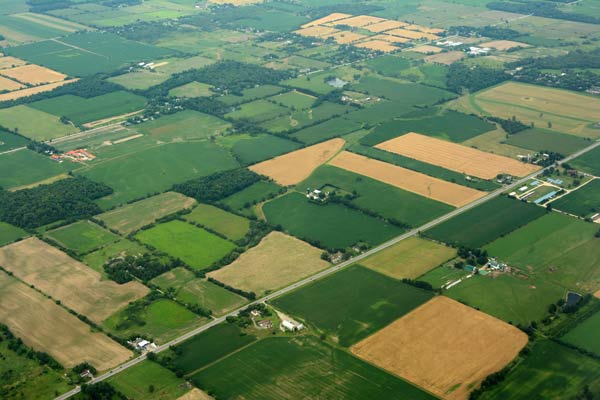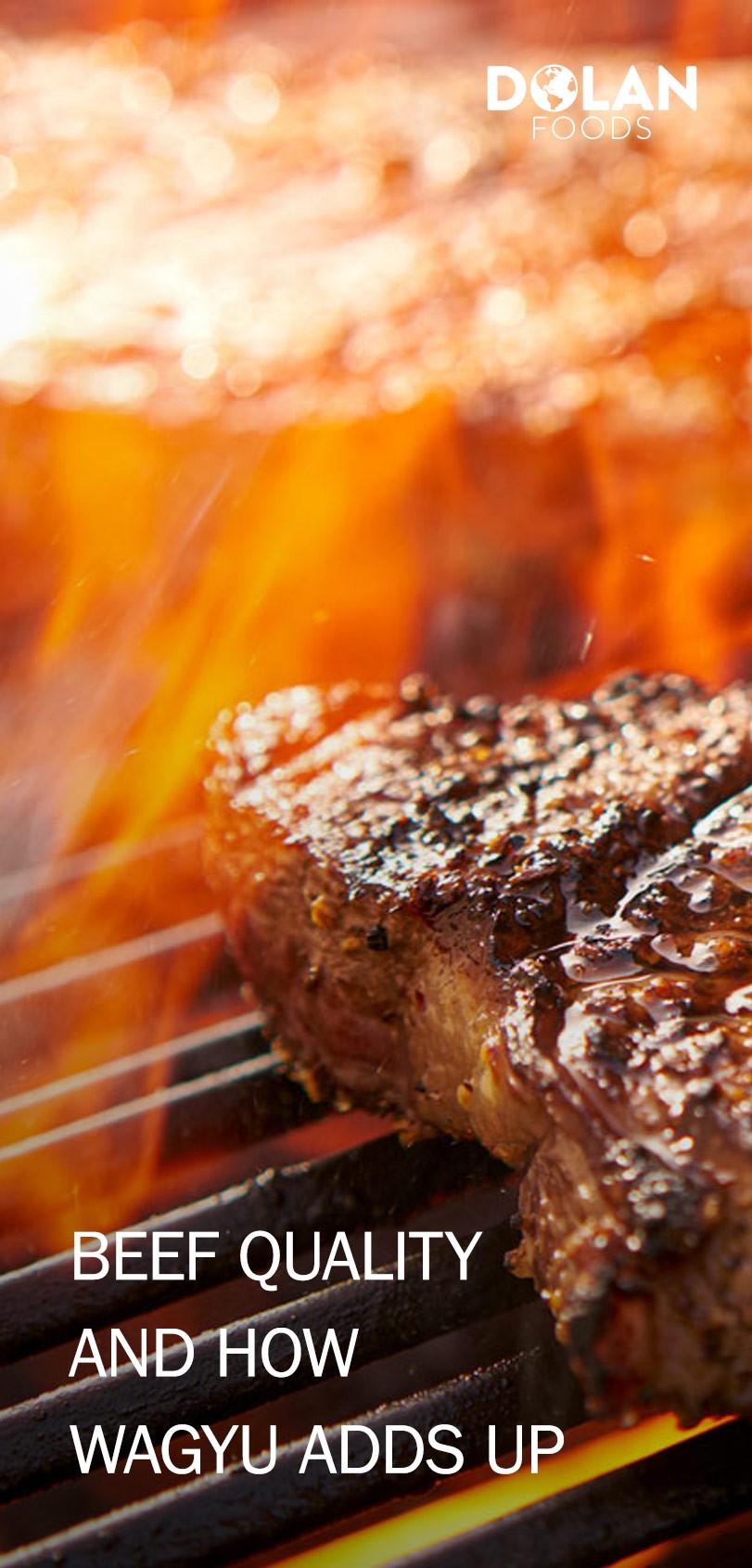
Before we embark on the regional distinctions between North American, Australian and Japanese Wagyu and their distinct grading systems, it’s crucial to understand the terms “Purebred” and “Full Blood” when it comes to Wagyu cattle. Pure Bred refers to animals with a high percentage of Wagyu genetics but not 100% Wagyu. On the other hand, Full Blood Wagyu indicates that the animal is purebred and comes from a lineage of 100% Wagyu cattle. This differentiation plays a significant role in the flavour and quality of the meat.
You can’t talk about Wagyu without discussing marbling and grading, so we need to cover these topics together.
What is Marbling?
Marbling is the distribution of intramuscular fat within the meat. This fat appears as small white streaks or flecks throughout the muscle tissue, resembling a marbled pattern. Marbling significantly impacts the taste and texture of the meat, making it a key determinant of beef quality. When it melts during cooking, the fat within the muscle fibres contributes to the meat’s tenderness, juiciness, and flavour.
Understanding Beef Marbling Score (BMS):
The Beef Marbling Score, measured on a scale from 1 to 12, quantifies the amount and quality of marbling in beef. The higher the BMS, the more abundant and evenly distributed the intramuscular fat, resulting in richer, more flavorful, and tender meat.
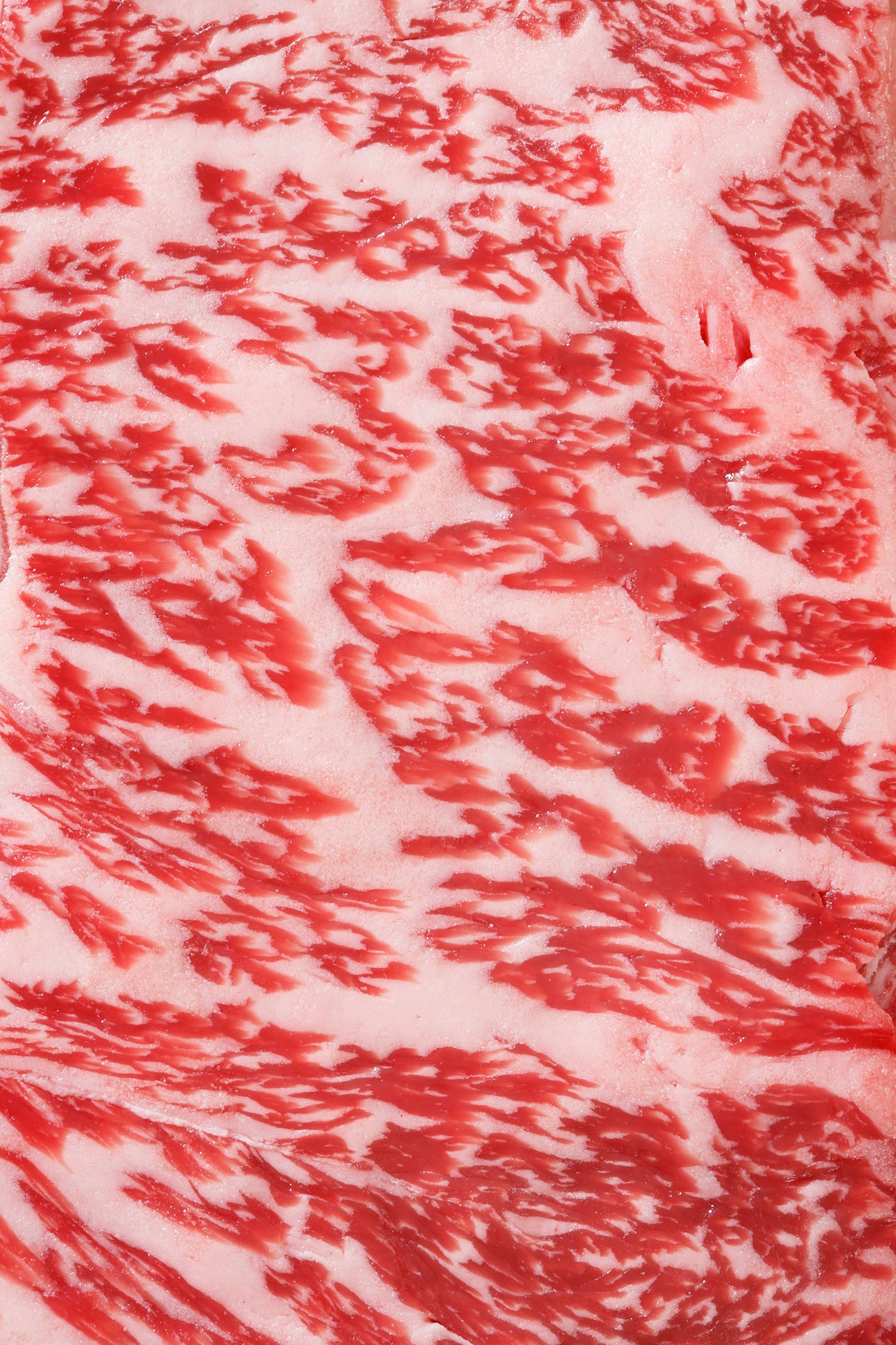
Ribeye Muscle Assessment:
A specific portion of the beef carcass is used tomaintain consistency in assessing marbling. Typically, this assessment is performed on the ribeye muscle located between the 12th and 13th rib of the animal. This area is chosen because it tends to have a representative amount of marbling for the entire carcass. The evaluator visually inspects this portion to assign the BMS and, in many instances, uses an electronic visual grader to confirm.
Variation in BMS:
The BMS scale may vary from one region to another. North American beef generally ranges from BMS 1 to 5, whereas Wagyu beef can span from BMS 1 to the highest grade of 12. In some grading systems, beef that scores nine or above on the BMS scale is considered exceptionally rare and of the highest quality. For example, Wagyu beef with a BMS rating above eight is often classified as A5, the top grade in Japanese Wagyu grading.
BMS provides a standardized and internationally accepted method for evaluating the marbling and quality of beef. It’s a valuable tool for producers and consumers, allowing them to make informed choices and appreciate the nuances of beef from different regions and grading systems. Higher BMS values generally indicate better marbling and a more luxurious dining experience.
Canadian and American Wagyu result from
crossbreeding Japanese Wagyu cattle with other breeds such as Angus. The goal is to enhance the marbling and flavour while adapting to the local conditions. Although North American Wagyu lacks the same level of marbling as its Japanese counterpart, it still exhibits impressive tenderness and exceptional beefy flavour. One notable advantage of Canadian Wagyu is its ability to perform well on the grill due to its lower fat content, resulting in fewer flare-ups. Wagyu has no authorized grading system across North America, so some manufacturers have developed their own.
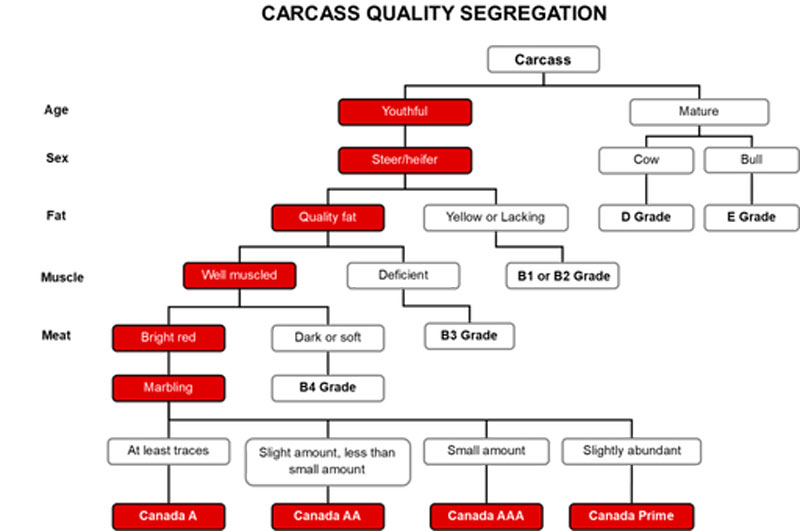
North American grading greatly resembles each other to ensure easy trading between countries. The big difference is that if a carcass misses a single point when being graded in Canada, it is kicked from the A-grade system. In America, it is downgraded to the next lowest grade within the Agrades.
NORTH AMERICAN GRADING EXPLAINED
Canada Prime: This is where the crème de la crème of Canadian beef resides. Only a mere 2.3% of all graded beef in Canada earns this prestigious grade. It’s essentially the Canadian equivalent of USDA Prime, the gold standard in beef.
A Grades: Our A-grade beef is subdivided into AAA, AA, and A, depending on the marbling. AAA is the cream of the crop, comparable to USDA Choice. Then there’s AA, akin to USDA Select, and A, which is equivalent to USDA Standard. All carcasses with A-grades are under 30 months of age.
B Grades: There’s B1, B2, B3, and B4, with B1 being the cream of the B crop. Beef in these grades often finds its way into the fast-food industry, making burgers, tacos, etc.
D Grades: We don’t have a C grade in Canada; we jump straight to D, similar to B grades, but more mature, with sub-grades from D1 to D4.
You’ll find D-grade beef in ground beef and
processed products.
E Grade: E-grade beef? That’s typically destined for processed foods or pet foods, so don’t expect to find it sizzling on your grill.
B, D and E grades equivalents for USDA USDA Standard & USDA Commercial: Often sold as ungraded meat. USDA Utility, USDA Cutter & USDA Canner: Typically used for ground beef, processed meats, and canned products; not sold directly as cuts of beef in retail stores.
Australian Wagyu is renowned for its consistency and high-quality marbling. Like North American Wagyu, it is bred by crossing Japanese Wagyu cattle with other breeds. The Australian Wagyu industry has gained recognition for its rigorous breeding programs, focusing on producing exceptional beef. While Australian Wagyu is less richly marbled than Japanese Wagyu, it offers a well-balanced flavour profile and excellent tenderness. Like its North American counterpart, Australian Wagyu excels on the barbecue due to its lower fat content, reducing the risk of excessive flare-ups.
Australian beef is well-known to be grass-fed, but grain finishing is standard and rarely mentioned. Australia recognizes animals as grass-fed if they are on grass for most of their lives. All Australian Wagyu processors are also halal certified, regardless of brand. Australian Wagyu is produced by crossing full-blood Japanese Wagyu bulls with Australian cows. It offers tenderness, juiciness, and marbling, with a firmer texture than Japanese Wagyu. Cost-wise, Australian Wagyu fits right between North American and Japanese Wagyu and is often the best of all worlds
AUSTRALIAN BEEF EXPLAINED
Australian Wagyu extends the grading system beyond M9, introducing M10, M11, and M12 to accommodate richer marbling. (refer to Aus-Meat chart on page 6).
Australia has two grading systems: AUS-MEAT and Meat Standards Australia (MSA).
MSA is a comprehensive grading system considering marbling, fat colour, meat colour, carcass weight, and pH.
Due to differing assessment criteria, there is no direct formula to convert MSA marbling scores into AUS-MEAT scores.
AUS-MEAT focuses mainly on marbling, with scores ranging from M0 to M9
Due to its incredibly high-fat content, it is best suited for pan-frying rather than grilling to avoid excessive flare-ups.
Wagyu, which means “Japanese cow,” isn’t just any beef; it is a specific term for four native Japanese cattle breeds raised with the utmost care and quality: the Tajima, the Shimane, the Hiroshima, and the Okayama. Among these, the Tajima breed, specifically the famous Kobe beef, is the most sought-after.
Wagyu cattle lead stress-free lives, getting pampered by specialist breeders in their first seven months. Keeping an animal close to zero stress is imperative, so some producers play classical music; in colder climates, they sometimes get massages or other individual practices.
Each has a birth certificate certifying their pure bloodline and a unique identification number.
The Japanese Meat Grading Association (JMGA) takes the reins when grading Wagyu beef. They use two aspects: “Yield Grade” (A to C) and “Meat Quality Score” (1 to 5), which combine to create an overall grade.
“Yield Grade” measures the percentage of edible meat on a Wagyu carcass, excluding organs and skin. “A” is the top tier here, but only full-blood Wagyu can score an A.
The “Meat Quality Score” considers marbling, meat colour, brightness, firmness, texture, and fat quality. Each factor is rated from 1 to 5, with 5 being the best. The final meat quality score is determined by the lowest score among these four factors. For example, if a beef scores 5 in three factors but only 3 in marbling, its final meat quality score is 3.
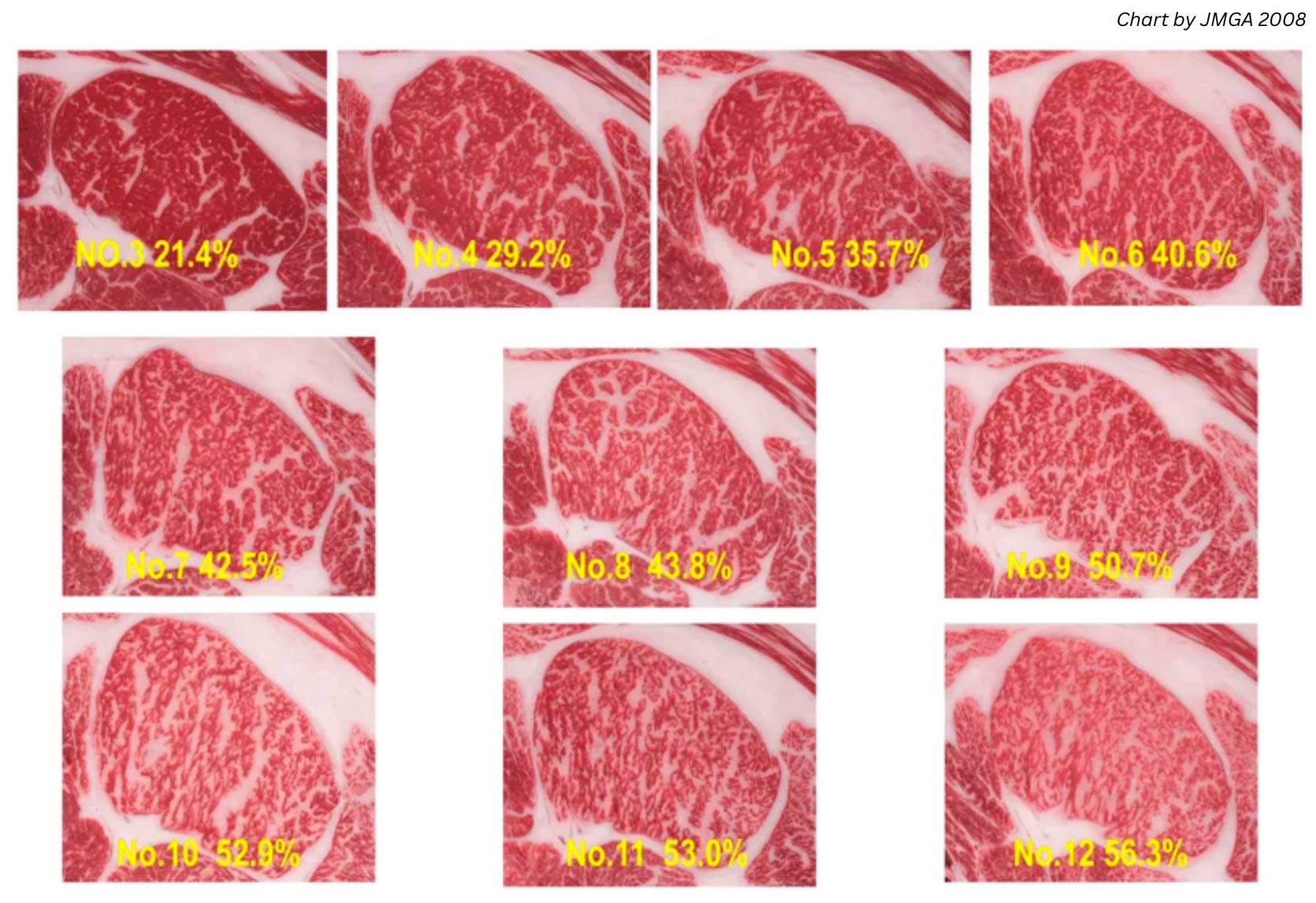

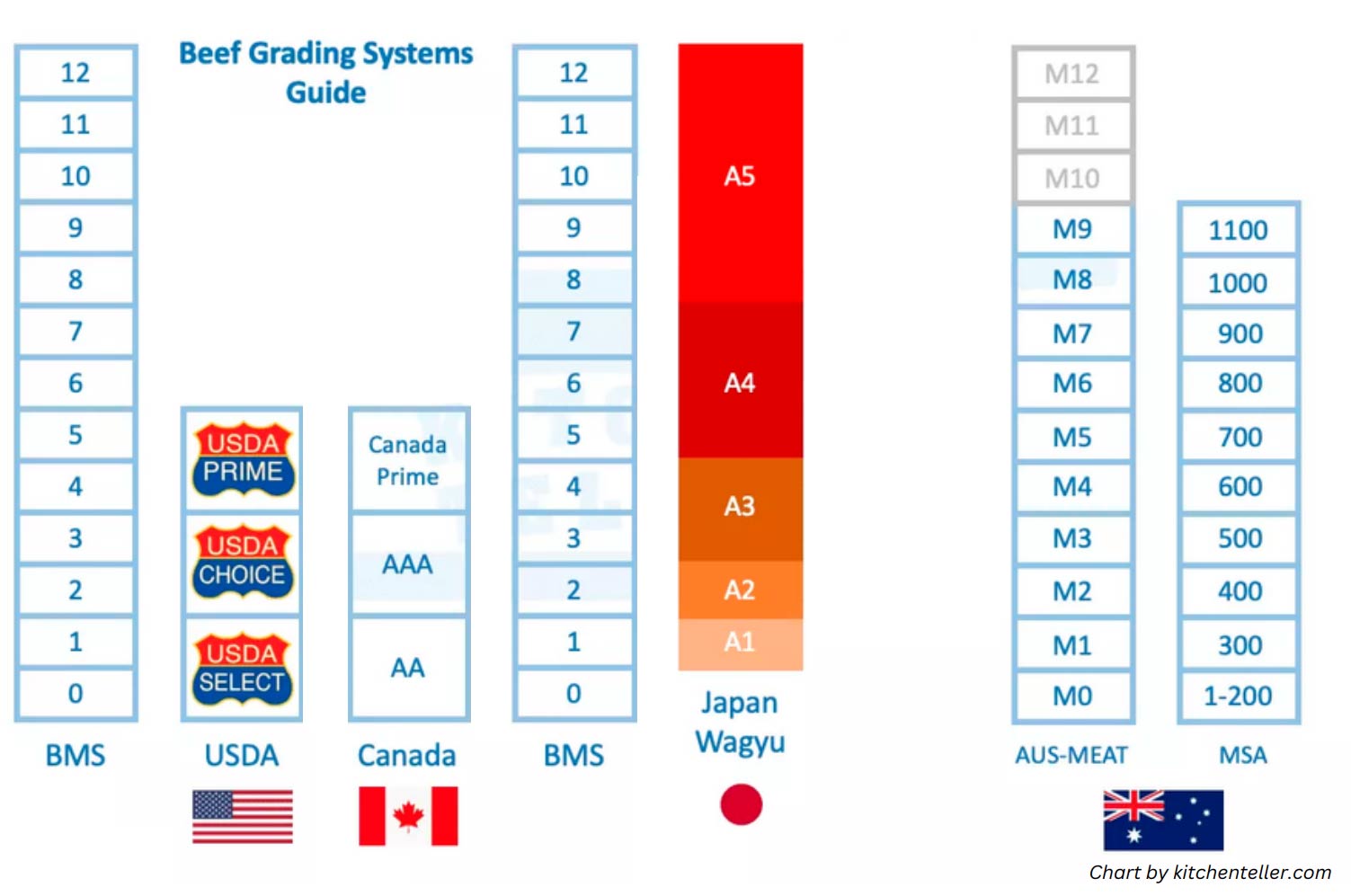
CONCLUSION
With Wagyu beef, each regional variety offers its own distinct experience. North American Wagyu and Australian Wagyu balance marbling, tenderness, and flavour, making them ideal for grilling and a lot more affordable. On the other hand, Japanese Wagyu’s unparalleled marbling and richness make it perfect for pan-frying. Understanding the differences between these varieties empowers us to make informed choices and explore the world of Wagyu beef with appreciation and enjoyment. So, whether you opt for North American, Australian, or Japanese Wagyu, prepare for a culinary journey, and those with the knowledge behind the meat get the best results.

